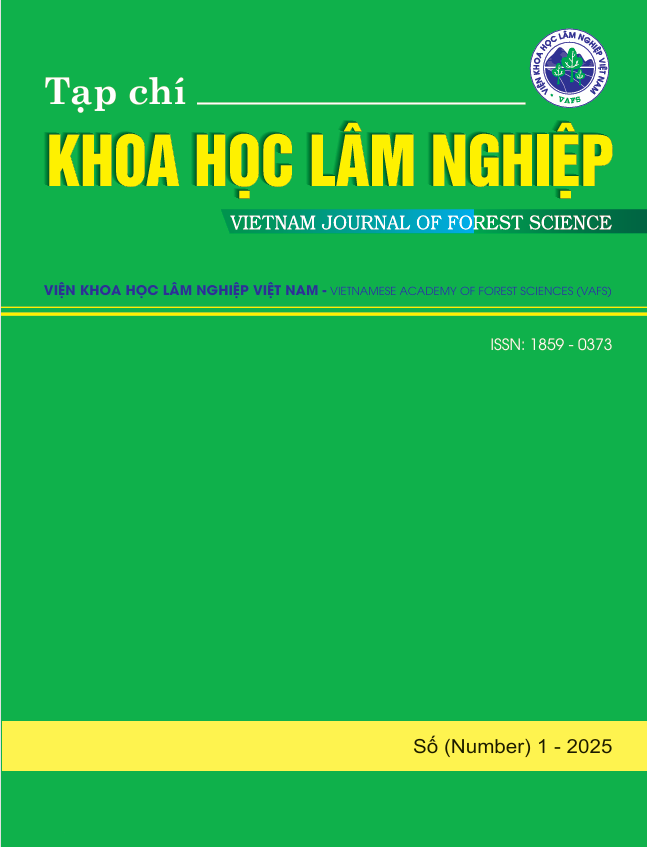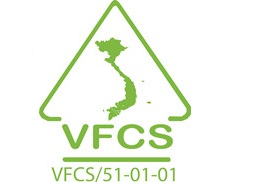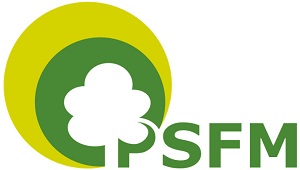MÔ HÌNH HÓA PHÂN BỐ VÀ CÁC YẾU TỐ ẢNH HƯỞNG ĐẾN LOÀI CHÈ CÁM (CAMELLIA FURFURACEA) TẠI VƯỜN QUỐC GIA TÀ ĐÙNG, TỈNH ĐẮK NÔNG
DOI:
https://doi.org/10.70169/VJFS.1013Từ khóa:
Mô hình phân bố loài, Chè cám , yếu tố ảnh hưởng, biến sinh khí hậu Bio, Maxent, AUC, Vườn Quốc gia Tà ĐùngTóm tắt
Nghiên cứu tập trung vào việc mô hình hóa phân bố của loài Chè cám (Camellia furfuracea) tại Vườn Quốc gia Tà Đùng, tỉnh Đắk Nông, Việt Nam. Phương pháp mô hình phân bố loài Maxent được sử dụng để xác định các yếu tố môi trường chính ảnh hưởng đến sự phân bố của loài. Dữ liệu đầu vào bao gồm thông tin thực địa với 76 điểm phân bố của loài, các biến sinh khí hậu, biến địa hình (độ cao, độ dốc, hướng phơi), và dữ liệu thảm phủ rừng. Kết quả chỉ ra rằng biên độ nhiệt độ ngày (Bio02) là yếu tố quan trọng nhất, đóng góp 41% vào mô hình với mức độ quan trọng 85,3%; theo sau là thảm phủ rừng (mức đóng góp là 51,6% và mức độ quan trọng là 6,1%) và lượng mưa của quý lạnh nhất (Bio19) (mức đóng góp là 2,7% và mức độ quan trọng là 5,4%). Khu vực có khả năng phân bố rất cao tập trung quanh đỉnh Tà Đùng, nơi có nhiệt độ thấp và biên độ nhiệt ngày lớn. Mô hình đạt độ chính xác cao với giá trị AUC = 0,964. Kết quả nghiên cứu cung cấp cơ sở để bảo tồn và phát triển Chè cám tại khu vực Đắk Nông, đồng thời mở rộng áp dụng mô hình cho các loài quý hiếm khác trong tương lai.
Tài liệu tham khảo
Adekanmbi, A. A., & Sizmur, T., 2022. Importance of Diurnal Temperature Range (DTR) for predicting the temperature sensitivity of soil respiration. Frontiers in Soil Science, 2, 969077. https://doi.org/10.3389/fsoil.2022.969077
Dinerstein, E., Olson, D., Joshi, A., Vynne, C., Burgess, N. D., Wikramanayake, E., Hahn, N., Palminteri, S., Hedao, P., Noss, R., Hansen, M., Locke, H., Ellis, E. C., Jones, B., Barber, C. V., Hayes, R., Kormos, C., Martin, V., Crist, E., … Saleem, M., 2017. An Ecoregion-Based Approach to Protecting Half the Terrestrial Realm. BioScience, 67(6), 534–545. https://doi.org/10.1093/biosci/bix014
Dormann, C. F., Elith, J., Bacher, S., Buchmann, C., Carl, G., Carré, G., Marquéz, J. R. G., Gruber, B., Lafourcade, B., Leitão, P. J., Münkemüller, T., McClean, C., Osborne, P. E., Reineking, B., Schröder, B., Skidmore, A. K., Zurell, D., & Lautenbach, S., 2013. Collinearity: A review of methods to deal with it and a simulation study evaluating their performance. Ecography, 36(1), 27–46. https://doi.org/10.1111/j.1600-0587.2012.07348.x
Dubuis, A., Giovanettina, S., Pellissier, L., Pottier, J., Vittoz, P., & Guisan, A., 2013. Improving the prediction of plant species distribution and community composition by adding edaphic to topo‐climatic variables. Journal of Vegetation Science, 24(4), 593–606. https://doi.org/10.1111/jvs.12002
Dubuis, A., Pottier, J., Rion, V., Pellissier, L., Theurillat, J.-P., & Guisan, A., 2011. Predicting spatial patterns of plant species richness: A comparison of direct macroecological and species stacking modelling approaches: Predicting plant species richness. Diversity and Distributions, 17(6), 1122–1131. https://doi.org/10.1111/j.1472-4642.2011.00792.x
Elith, J., Kearney, M., & Phillips, S., 2010. The art of modelling range-shifting species: The art of modelling range-shifting species. Methods in Ecology and Evolution, 1(4), 330–342. https://doi.org/10.1111/j.2041-210X.2010.00036.x
Elith, J., Phillips, S. J., Hastie, T., Dudík, M., Chee, Y. E., & Yates, C. J., 2011. A statistical explanation of MaxEnt for ecologists: Statistical explanation of Maxent. Diversity and Distributions, 17(1), 43–57. https://doi.org/10.1111/j.1472-4642.2010.00725.x
Evans, B., & Lyons, T., 2013. Bioclimatic Extremes Drive Forest Mortality in Southwest, Western Australia. Climate, 1(2), 28–52. https://doi.org/10.3390/cli1020028
Naimi, B., Hamm, N. A. S., Groen, T. A., Skidmore, A. K., & Toxopeus, A. G., 2014. Where is positional uncertainty a problem for species distribution modelling? Ecography, 37(2), 191–203. https://doi.org/10.1111/j.1600-0587.2013.00205.x
Nguyen, Q., Mai, Q., Nguyen, M., Bui Thi, B. H., Doan, M., Le, T. M., Nguyen, P., Nguyen, T., & Nguyen Thi, T., 2024. Phytochemical Profiles and Biological Activities of Five Wild Camellia Species from Ta Dung, Vietnam. Chemistry & Biodiversity, e202401047. https://doi.org/10.1002/cbdv.202401047
Thanh Huong Thi, N., The Hien, N., Thi Hang, P., Thi Hoai, C., & Dinh Bao, H., 2024. Classification of forest cover of Ta Dung National Park, Vietnam using optical satellite images. IOP Conference Series: Earth and Environmental Science, 1391(1), 012018. https://doi.org/10.1088/1755-1315/1391/1/012018
Patrick Bell, Nictor Namoi, Christine Lamanna, Caitlin Corner-Dolloff, Evan H. Girvetz, Christian Thierfelder, & Todd S. Rosenstock., 2018. A practical guide to climate-smart agriculture technologies in Africa. CGIAR, 224.
Phillips, S. J., Anderson, R. P., & Schapire, R. E., 2006. Maximum entropy modeling of species geographic distributions. Ecological Modelling, 190(3), 231–259. https://doi.org/10.1016/j.ecolmodel.2005.03.026
Steven J. Phillips., 2017. A Brief Tutorial on Maxent. Center for Biodiversity and Conservation, American Museum of Natural History. http://biodiversityinformatics.amnh.org/open_source/maxent/Accessed on 2024-10-10
Sunil Kumar & Thomas J. Stohlgren., 2009. Maxent modeling for predicting suitable habitat for threatened and endangered tree. Journal of Ecology and Natural Environment, 1, 94–98.
Tianlu Min & Bruce Bartholomew., 2007, Tháng Mười-Một 19. Theaceae—Flora of China Illustrations. Science Press, Beijing, and Missouri Botanical Garden Press, St. Louis., volume 12. http://www.efloras.org/florataxon.aspx?flora_id=2&taxon_id=10882
Wakie, T. T., Evangelista, P. H., Jarnevich, C. S., & Laituri, M., 2014. Mapping Current and Potential Distribution of Non-Native Prosopis juliflora in the Afar Region of Ethiopia. PLoS ONE, 9(11), e112854. https://doi.org/10.1371/journal.pone.0112854
WFO., 2024. Camellia furfuracea (Merr.) Cohen-Stuart [Dataset]. http://www.worldfloraonline.org/taxon/wfo-0000582353













